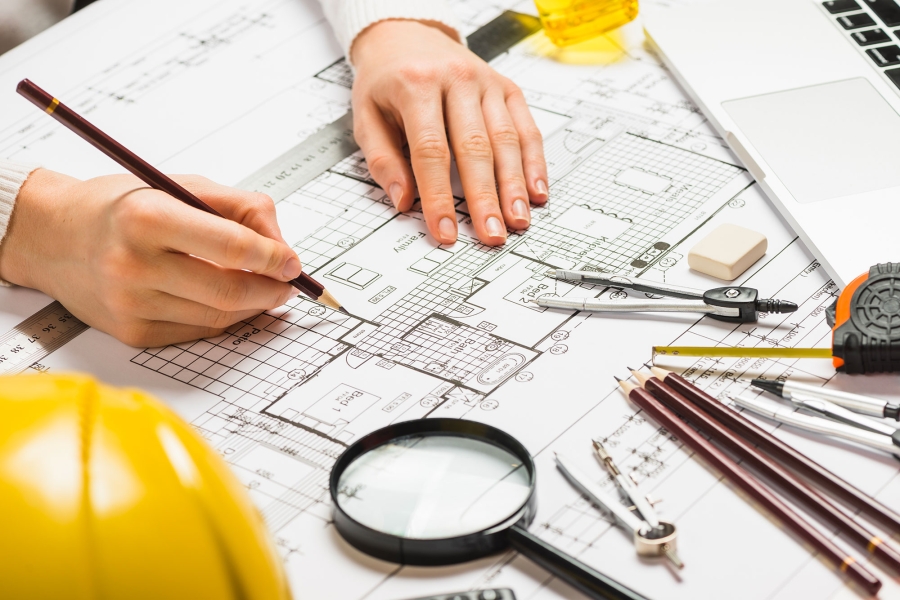

May 26, 2023
Why is designing accessible and inclusive spaces
important?
As architects, it is essential to
consider the needs of all users when designing buildings and spaces. Designing
accessible and inclusive spaces is crucial because it ensures that all
individuals, regardless of their age, ability, or background, can access and
use a space safely and comfortably. Creating such spaces also promotes social
inclusion and equity, helping to eliminate barriers and discrimination that can
prevent certain individuals from fully participating in society. By
prioritizing accessibility and inclusivity in design, we can foster a more
welcoming and accommodating environment for everyone, promoting diversity, and
enhancing overall quality of life. In this blog, we will discuss the importance
of designing accessible and inclusive spaces in architecture and some practical
tips on how to achieve this.
To incorporate universal design principles into architectural practice, it is important for architecture students to receive proper training. Here are some key points to consider when designing a universal design training program for architecture students:
By providing architecture students with a comprehensive universal design training program, we can help ensure that the next generation of architects designs spaces that are accessible and accommodating for everyone. Universal design is not just a goal, but a responsibility of the architecture profession to promote inclusivity and equity for all.
Accessible technology in Architecture
Accessible technology has become an
increasingly important consideration in architecture. Technology can provide
solutions that make buildings and spaces more accessible to people with
disabilities, creating a more inclusive built environment. One of the most
significant areas of accessible technology in architecture is assistive
technology. This can include a wide range of devices and equipment, such as
ramps, elevators, and tactile paving that help people with mobility impairments
to navigate buildings and outdoor spaces. Another area where technology is
making a difference is in the design of digital interfaces and virtual environments.
By using inclusive design principles and incorporating features such as
voice-activated controls, haptic feedback, and captioning, architects can
create digital spaces that are more accessible to people with disabilities.
However, it's important
to note that technology alone cannot solve all accessibility challenges. It's
essential for architects and designers to work with people with disabilities
and accessibility experts to ensure that their designs meet the needs of
everyone.
BACHELOR OF
Architecture (B.Arch)
5 Years, Degree Programme
Nitte College of Architecture, located in Bangalore, Karnataka, is one of the best institutions for those interested in pursuing a career in architecture and planning. The college offers undergraduate program in architecture, providing students with a comprehensive education that prepares them for success in the field. The Bachelor of Architecture program at Nitte College is a five-year course that is designed to provide students with a strong foundation in architecture. The curriculum covers a range of topics such as architectural history, design fundamentals, building construction and materials, and building services. In teaching architectural design and fundamentals, the prime methodology and focus is on universal design principles, accessibility and inclusive architecture which involves a structured approach that emphasizes both theoretical concepts and practical applications. Here are some aspects considered when designing such a teaching method:
Conclusion:
Incorporating Universal Design principles, providing ample space, multiple points of entry and exit, considering lighting and acoustics, using non-slip surfaces, considering way-finding and signage, and involving stakeholders in the design process are some practical tips for achieving this goal. By designing accessible and inclusive spaces, we can create a built environment that is welcoming, safe, and usable for all individuals, regardless of their physical abilities and accessible technology has enormous potential to improve the lives of people with disabilities and create a more inclusive built environment. By embracing the latest technologies and working collaboratively with accessibility experts, architects can help to create spaces that are accessible, welcoming, and inclusive for everyone.
Overall, architects play a significant
role in shaping the built environment, and they must be aware of the needs of
all people who will use the spaces they design. By teaching accessibility and
inclusive architecture in architecture schools, we can ensure that the next
generation of architects is equipped with the necessary knowledge and skills to
create spaces that are accessible to everyone.
